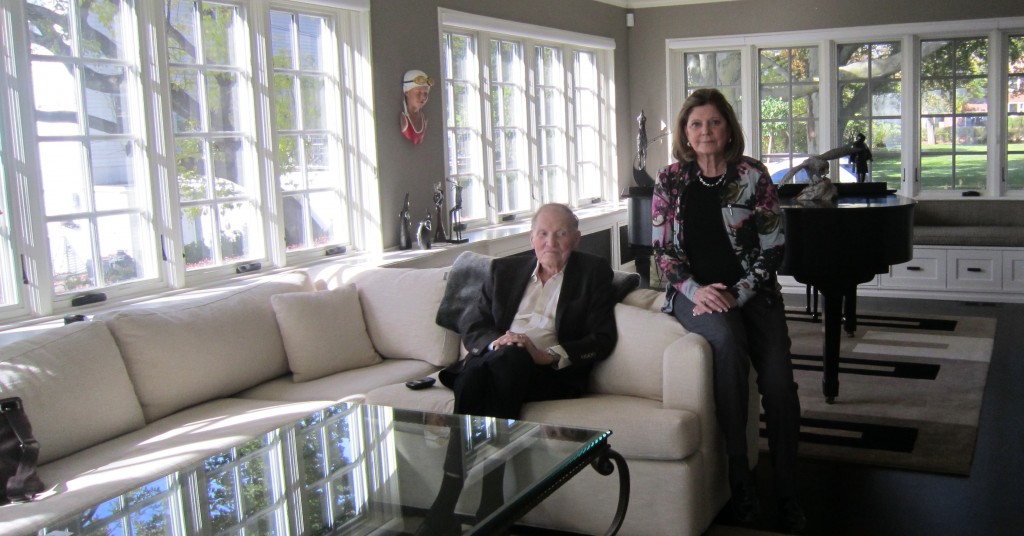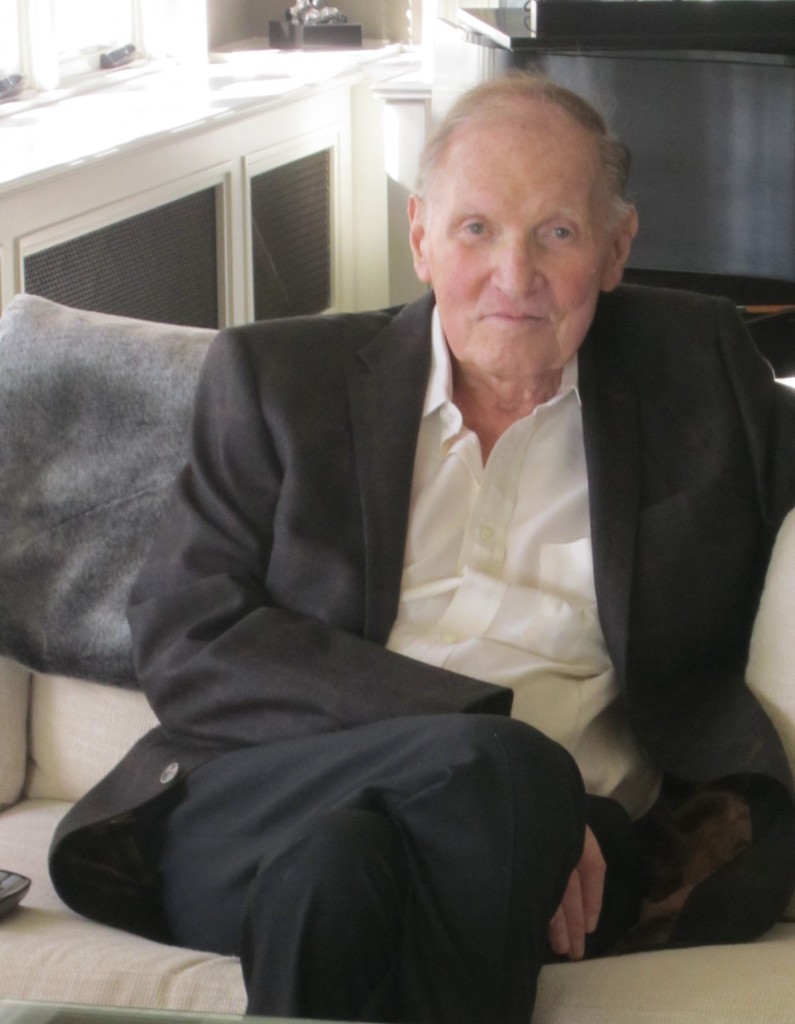By Pepper Parr
BURLINGTON, ON. It doesn’t take long to get the gist of Murray Hogarth. If you listen and watch his eyes you realize that Murray did it his way – he beat the big guys, he beat big oil.
He did it through hard work and being very fast on his feet. With a very successful company running smoothly Murray Hogarth was able to turn the whole operation over to two of his sons and use his time keeping a sharp eye on them.
Born in Napanee, raised there – after high school he got himself along the 401 to Kingston where he enrolled as an engineering student at Queen’s University and realized very quickly that wasn’t the road he wanted to travel and switched to Arts & Science but found that all the lab work wasn’t all that inspiring either. Murray realized he was a doer – he needed to be out in the field, talking to people, thinking through his ideas and planning. Murray was probably born a planner.
During his high school years he had an orchestra – 10 piece set up that he used to earn his keep. Blew a trumpet and played events that included his high school and the Ontario Ladies College in Brockville.
Murray`s parents ran a retail operation in Napanee that specialized in gift items and fine china. He worked the shop with his brother when he wasn`t renting the golf club for dances. Murray was probably making money before he was out of short pants.
In `53 he was hired by what was then British American Oil company (they became Gulf oil) and given a territory in Scarborough where he made sure 40 gas stations were meeting their sales targets. Murray soaked it all up and within a year the company moved him to Windsor where it was a much bigger business. He watched over the gas stations as well as farm and industrial accounts.
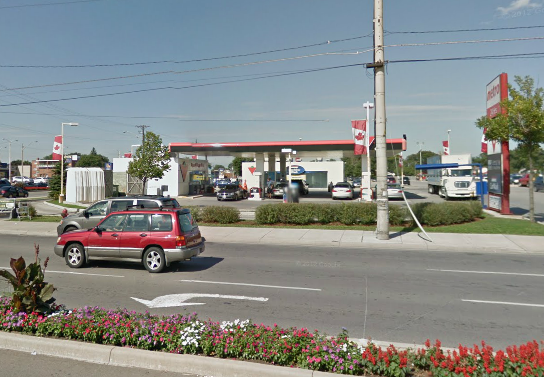
The first Pioneer gas station – it didn’t look like this the day it opened but it has been open every day since November 1956.
In those days there were very few individual gas station operators to speak of; everything was run by the national brands – the Americans had private operators but the idea hadn`t taken hold in Canada – yet. One of the corporate accounts Murray serviced was a single station – Beaver, that grew and was eventually sold to Shell Oil. But before that sale took place Murray became a chum of the owner and the two of them tried some of the American ideas – Murray was in the process of becoming the man who would create the most successful private brand oil and gas operation in the country. The only thing they don`t do is refine or run a pipeline operation – yet.
Windsor was a great proving ground for Murray. If you saw an opportunity you were able to go ahead and develop it. The relationship with the Beaver operator flourished. They liked the ideas they saw being developed across the river in Detroit and tried many of them in Windsor. After two and a half years in Windsor Murray began to wonder why he was working for big oil – he made his move.
Every weekend Murray would drive to Hamilton and scout that market. He knew the blue-collar market and he believed he knew how to market to it better than anyone else. He didn’t know a soul in town when he first got there but he knew he needed a market just like Windsor and focused on Hamilton. He found what he was looking for at the corner of Upper James and Mohawk. Murray leased the land, which he later bought and began to build the empire that today has 200 stations in Ontario and a clutch of them in Manitoba where he took over a bunch of Esso Stations.
There was a bit of swamp on the land that Murray was going to build his station on and he knew that at some point he would need to fill that in. Then he noticed a contractor doing some grade work and hauling away the fill. Murray invited the contractor to dump that fill in the swampy land he had leased.
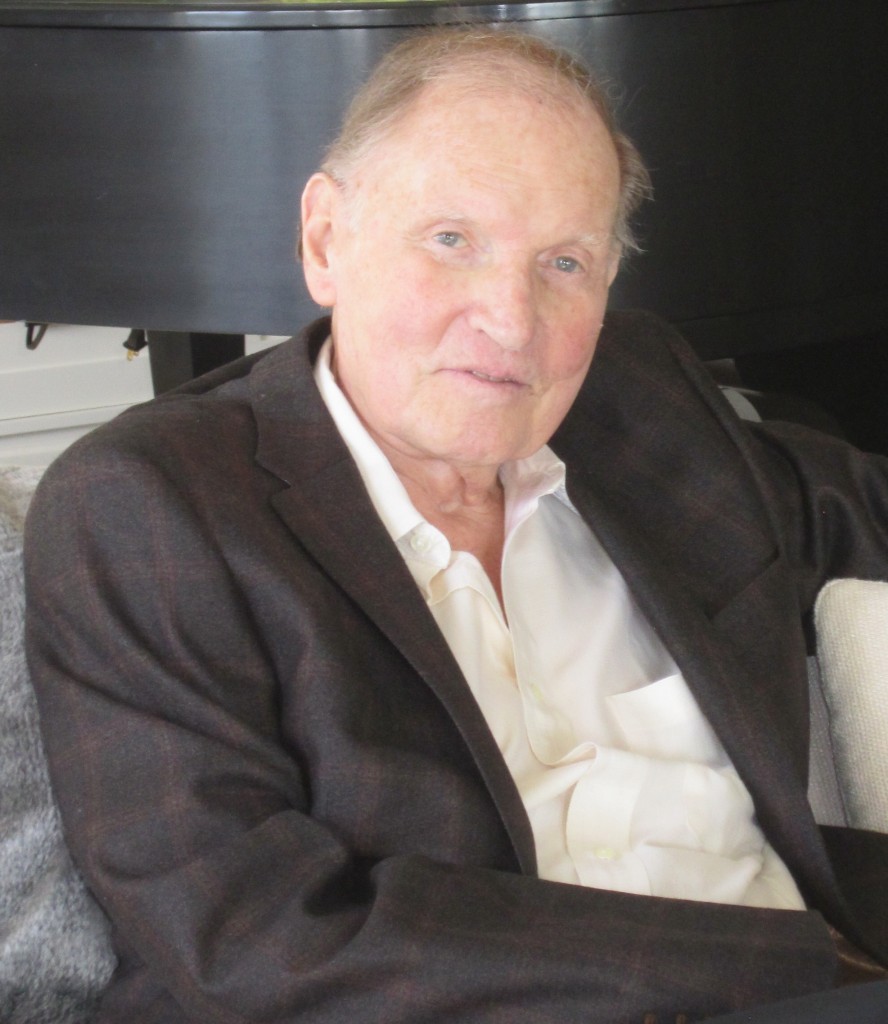
Murray Hogarth: Reflective and able to focus on pet project with the operation of the gas companies now in the hands of his sons.
That Upper James station is still operating – it has never closed since he first opened in November of 1956. It began as a 24/7 operation and has stayed that way. When Murray chose that first Hamilton station the world of gas stations first saw the wily mind of a mater marketer. In those days Upper James and Mohawk were just across the County line – and Hamilton had an early closing bylaw. That first Pioneer station was 150 feet beyond the County line.
Murray saw Hamilton as a market that was small enough for a private operator to be recognized yet big enough for him to grow in. And grow he did. Buying property meant a need for capital or earnings that could pay for the second and third stations.
Murray put his money into property and marketing. In the early days he will tell you gas stations didn’t have canopies over the pumps; Murray put in canopies. Most of the stations were a single island with maybe two pumps. Murray wanted volume so he put in three islands with two pumps at each so that four, six or eight cars could swallow that gas.
Gas stations were pretty bland looking places. Murray brightened them up and because he stays open long hours he put in as much fluorescent lighting as he could afford. He gas station business was never going to be the same.
He put up bunting, flags and offered deals and lower prices. In those days stations carried several brands of oil at different price points. Murray carried several and made sure that the brand with his name on it was the lowest price.
He was the first to put booths with cash registers out where the pumps were so that people could pay quickly and move on – making room for another customer.
He was one of the very first, if not the first, to create a loyalty program that gave customers another reason to return. Car washes were added to the mix.
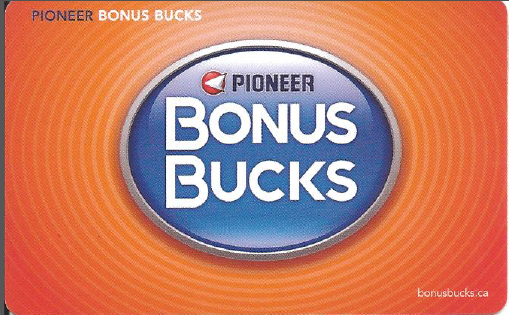
Created marketing tools that led the way. The Pioneer loyalty program rewards its customer with cash rebates that are printed on the receipt. Air Miles doesn’t give you that.
Growing the business was no slam dunk – there was more than one very close call – three of them in fact , but what kept the chain alive was Murray’s ability to make quick decisions. “I didn’t have a board that I had to meet with”; one gets the impression that Murray Hogarth isn’t all that big on corporate committees either.
Listening to Murray explain the corporate structure and the way he moved two of his sons into the company and gave them increasing levels of responsibility, one assumes the man has an MBA. No, Murray worked from the pit of his stomach and a developed understanding of his customer base. He learned by doing and from his mistakes. He looked for opportunities to give staff all the responsibility they could handle. He was a task master – with a heart.
While retired, it doesn’t take long to see a pair of eyes that don’t miss much and at the same time have that twinkle that tells you – Murray Hogarth did it his way – and he beat the big guys. He did it with a strong, supportive wife who may not have actually pumped gas but she was in every one of those stations in the early days and when Murray leaves out a fact – she is quick to remind him that they acquired a string of stations in Manitoba from Esso.
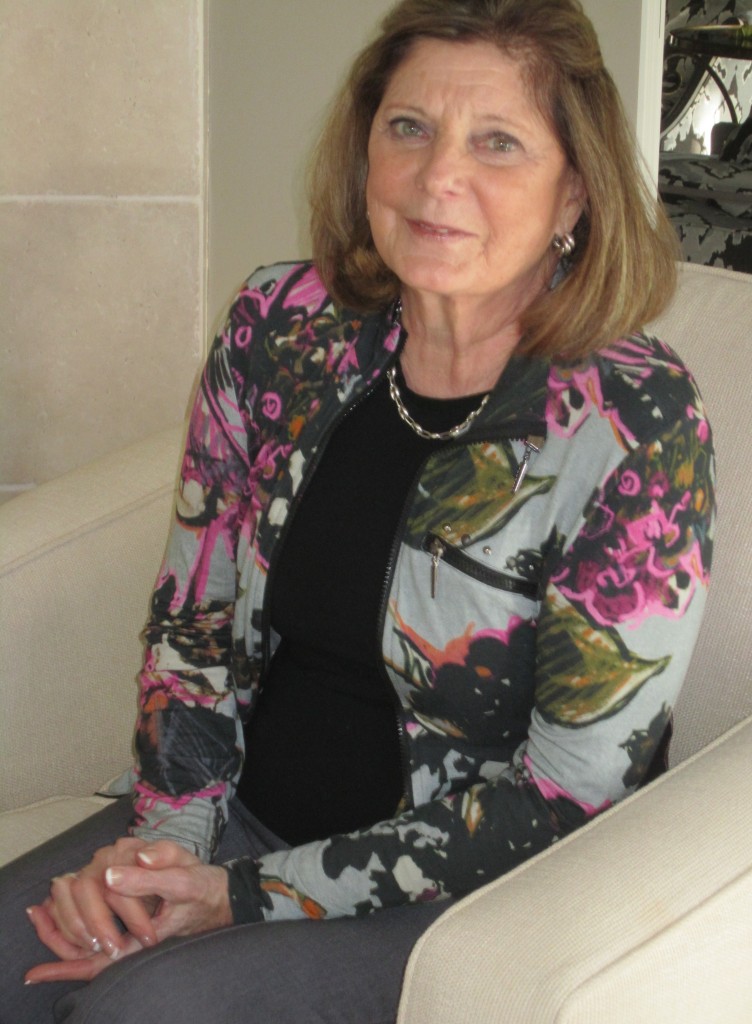
Diana Hogarth – five boys and a husband build a business doth a career make. She is also a noted designer.
Murray first laid eyes on Diana when she was ten. She was the sister of one of Murray’s best friends. Years later that friend asked Murray to go to a dance with him – Murray couldn’t hustle up a date and the friend suggested he ask his sister Diana. “Ask her just for laughs” the friend suggested and the Murray and Di story began. The two of them, almost in unison say: “and we’ve ben laughing ever since”.
We interviewed Murray and Diana Hogarth in the sun room of their Lakeshore Road home, nicely decorated with good art and sculpture tastefully sprinkled throughout the house. Murray soaks up the sun as he recovers from surgery. With the interview nearing its end Diana gets up to see her guest out and touches Murray on the shoulder asking: “Are you ready for some lunch”.
Today, son Tim is the Chairman and Chief Executive Officer of the company while another son heads up the marketing side.
Arching over the different t corporations is the “family” firm – Pioneer Energy where Murray, Di and the five boys sit as Directors with two outside directors to create strategy and guide everything.
Murray took in part of the Community Foundation celebration last weekend. Recovering (very nicely by the way) from serious surgery, he chose not to give a speech and had his son Tim fill in for him.
Tim was not there to laud his parents. He spoke about giving back to the community and the lessons his Dad had taught him and his brothers.
“Typical of my father’s entrepreneurialism” said Tim, “Murray recognized that while we can’t always predict what lies ahead, we can always make sure we are prepared to seize the opportunity or meet the need when it arises. And that is what this is all about. It’s never too late… philanthropy, as Murray and Diana have proven time and again, has no retirement age.”
Tim had taken up the philosophical torch from his Dad.
Murray was big on giving back to a community that has given to him. His early involvement in growing community was with the Hamilton Community Foundation where he served as president. He reminds people that Hamilton and Burlington didn’t always work that well together. Burlington wasn’t contributing the way some felt it should and Murray got behind a movement to create a Burlington Community Foundation, and was its first president. “I wrote them their first cheque” he adds with a modest measure of pride.
Diana – they call her Di, runs the household and still puts in time at her design business. Do not call Diana Hogarth a decorator – “decorators”, she will tell you, almost dismissively, “paint walls or hang wall paper”. Diana is a designer and if the sun room we met in is an example of her work – there are a number of homes in this community that have been very, very nicely done.
She and Murray raised five boys, two of whom are in the family business. Between them they have 13 children. Gregory, twins Tim and Geoffrey, Christopher and Peter. Tim and Geoffrey are at Pioneer. Peter, Tim and Greg are heavily involved in the franchise business with Wendy’s and Tim Hortons being their biggest operations. Peter is also in the home building business.
Murray and Diana Hogarth were recognized last weekend by the Burlington Community Foundation as the Philanthropists of the Year. The evening they were recognized, the family announced a gift of $1 million to the Joseph Brant Hospital which they gave through the Burlington Community Foundation.
A small room that serves as a bit of an office just inside the front door of their home, that has every inch of its walls covered in either book shelves or pictures that Diana refers to as the “rogue’s gallery”. The pictures capture the boys and their families – there are 13 grandchildren, at the various stages of their lives.
Tim said to the audience at the Masquerade Ball where Murray and Diana were honoured: “We experienced and watched the struggles of Dad and Mom establishing a business and trying to make it work and grow. Our father invested his life savings along with a small loan from his father and brother to get the business started.
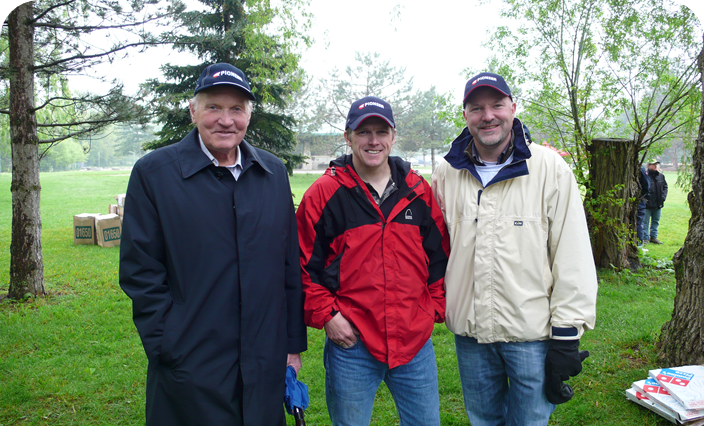
Murray Hogarth with sons Geoff and a representative from the Ontario Federation of Anglers and Hunters
“We boys had absolutely no clue of the hardships and challenges our parents faced in trying to make their dreams a reality. Being oblivious can sometimes be a wonderful thing! Somehow it all magically seemed to work out- the business took flight and grew bigger.. but as my brothers and I soon would learn from Dad.. you create your own magic with hard work, passion and a commitment to succeed and the rest will take care of itself.”
“As their sons, we couldn’t ask for better role models on how to live and lead a successful life. Back in the 60’s.. Burlington was a relatively small community and somehow while having to support five boys, a new fledgling business, and pay the mortgage my parents still found time to give to the community and support local causes.
“I remember my mother being very involved in the Junior League as well as launching and chairing the first campaign in Burlington for the Heart & Stroke Foundation and actively canvassing many evenings and weekends.”
“Regardless, of the challenges they faced as the years went by they always supported their community and that philosophy infected us. Murray explains that the Masquerade Ball was the occasion he used to pass the torch to his sons. I showed them how it’s done – now I expect them to lead in their own fashion.”
Today, the Burlington Community Foundation manages $7.5 million, with 67 endowed funds from individuals, families, corporations and agencies. It has granted over $1.6 million, and touched over 41 charities and non-profit organizations in the past twelve months. That is success by any measure! And that is how a gift of $100,000 can multiply.
Former Burlington Mayor Rob MacIsaac put it very well when he said that first $100,000 “really sparked a coming of age for philanthropy for our city… and demonstrated a level of leadership that paved the way for many donations since.”
For the Hogarth’s the question they ask about philanthropy is: “Isn’t that why we’re here? The welfare of our community, of others, IS our concern. It is not a burden, but an opportunity.”
‘Why not share is a question worth asking yourself. Business is not just all about making money. Although, critically important, it is not how you create value. Money is the offshoot of value – not the cause of it. That is something both my parents have always believed in.
They gave through the Hamilton Community Foundation, which Murray eventually chaired. And went on to help establish the Burlington Community Foundation and then the Napanee Community Foundation in Murray’s original home town with his brother Don.
And they set up the Pioneer Energy Foundation and Pioneer Energy Fund in 1999 as projects to mark Canada’s Millennium.
As Murray puts it: “This public / private foundation model is an efficient way for businesses and families to give back in perpetuity to the areas and projects of their community where there is the most need, both now and in the future.”
And that’s the key: “in perpetuity”. It’s the gift that keeps on giving, keeps on benefitting the community. It ensures “sustainability”.
That’s when Murray Hogarth’s quiet smile builds up. He did it his way and it worked. His boys will now carry the torch – expect it to burn as brightly in their hands.













